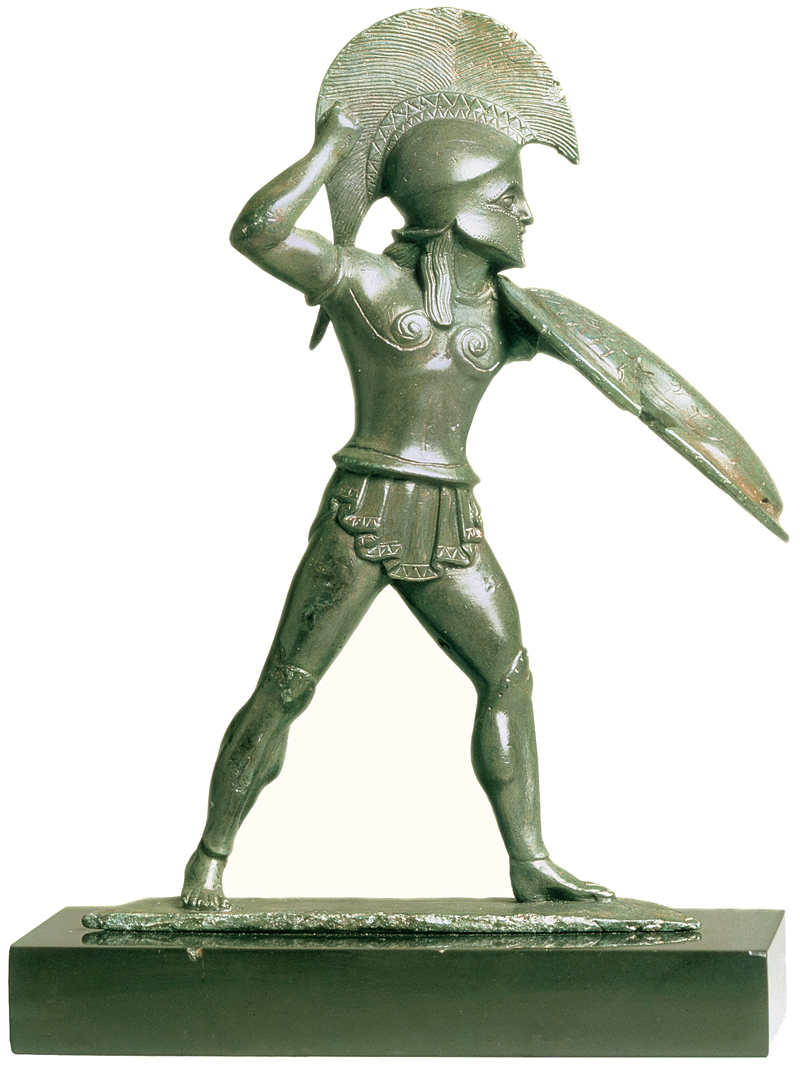A History of World Societies:
Printed Page 119
A History of World Societies Value
Edition: Printed Page 117
Organization of the Polis

The Greek polis was not the first form of city-
The polis included a city and its surrounding countryside. The countryside was essential to the economy of the polis and provided food to sustain the entire population. The people of the polis typically lived in a compact group of houses within the city, which by the fifth century B.C.E. was generally surrounded by a wall. Many left the city each morning to work their fields or tend their flocks of sheep and goats, and they returned at night. Another feature was a usually elevated area called the acropolis, where the people erected temples, altars, public monuments, and various dedications to the gods of the polis. The polis also contained a public square or marketplace, the agora, where there were porticoes, shops, public buildings, and courts. Originally the place where the warrior assembly met, the agora became the political center of the polis.
All poleis, with one exception, did not have standing armies. Instead they relied on their citizens for protection. Very rich citizens often served as cavalry, which was, however, never as important as the heavily armed infantrymen known as hoplites. These commoners were the backbone of the army, just as foot soldiers were in China during the Warring States Period (see Chapter 4). Hoplites wore bronze helmets and leather and bronze body armor, which they purchased themselves.
Greek poleis had several different types of government. Sporadic periods of violent political and social upheaval often led to the seizure of power by one man, a type of government the Greeks called tyranny. Tyrants generally came to power by using their wealth or by negotiating to win a political following that toppled the existing legal government. Tyrants were not always oppressive rulers, however, and sometimes used their power to benefit average citizens.
Democracy translates as “the power of the people” but was actually rule by citizens, not the people as a whole. Almost all Greek cities defined a citizen as an adult man with at least one citizen parent (or at some times and places, two citizen parents). Thus citizens shared ancestry as well as a place of residence. Women were citizens for religious and reproductive purposes, but their citizenship did not give them the right to participate in government. Free men who were not children of a citizen, known as resident foreigners, and slaves were not citizens and had no political voice. Thus ancient Greek democracy did not reflect the modern concept that all people are created equal, but it did permit male citizens to share equally in determining the diplomatic and military policies of the polis without respect to wealth.
Oligarchy, which literally means “the rule of the few,” was government by a small group of wealthy citizens. Many Greeks preferred oligarchy because it provided more political stability than did democracy. Although oligarchy was the government of the prosperous, it left the door open for political and social advancement. If members of the polis could meet property or money qualifications, they could enter the governing circle.